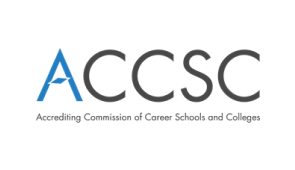An artificial intelligence (AI) tutor recommends a student switch majors based on algorithmic predictions.
Does it sound helpful? Maybe.
But what if that recommendation stems from biased data limiting a student’s potential? We are handing algorithms immense power in learning environments, making the ethical use of AI in education non-negotiable.
With great power, however, comes great responsibility in AI use.
As AI reshapes international higher education—from automated grading to personalized learning paths—we confront urgent moral questions.
- How do we prevent discrimination? Who owns student data?
- What does student data privacy mean in an AI-driven world? How do we ensure fairness in AI applications?
- Can we achieve transparency in AI systems?
These are not just academic questions; they impact students, educators, and institutions on a daily basis. Safeguarding student data privacy, ensuring fairness in AI use, promoting transparency, bridging equity gaps, and preserving the human element are all key ethical considerations.
Ethical Use of AI in Education
Learning experiences should not come at the cost of privacy or fairness. Yet AI systems in classrooms collect staggering amounts of student data—writing patterns, engagement metrics, even facial expressions.
This demands rigorous safeguards. Students deserve to know how their data trains AI models and who accesses it. The rapid adoption of AI—86% of students use it regularly—highlights the urgency of ethical frameworks.
Without them, risks like data breaches, biased algorithms, and eroded trust threaten educational integrity. Responsibility in the use of AI in education means treating data like confidential medical records—protected, consensual, and minimal.
Research suggests ethical guidelines are often lacking, with only 22% of institutions having AI conduct codes (AIRPM).
Ethical AI ensures technology enhances learning while respecting individual rights.
Consider these non-negotiable principles:
- Student data privacy is a core design requirement.
- Algorithmic transparency so decisions can be audited.
- Bias in educational AI proactively tested and corrected.
Schiller International University embeds ethics in its technology curricula, urging future developers to prioritize human dignity over efficiency.
Safeguarding Student Data in AI-Driven Education
AI applications in education rely on vast datasets—personal details, academic records, even behavioral patterns—to create tailored learning experiences.
While powerful, this raises serious student data privacy concerns. In 2018, an educational technology company faced backlash for sharing student data without consent, exposing the risk of misuse of the data.
To protect student data privacy, institutions must act decisively by following the below practices:
- Informed Consent: Students and parents should know what data is collected.
- Data Minimization: Collect only essential information.
- Transparent Policies: Clearly explain data use and storage.
- Security Measures: Use encryption and regular audits.
Compliance with laws like the Family Educational Rights and Privacy Act (FERPA) ensures responsibility in AI use. Prioritizing student data privacy builds trust, allowing AI systems to enhance education safely.
Fairness in Use of AI in Education
Bias in educational AI is a major ethical hurdle. Algorithms can produce unfair outcomes if training data reflects historical biases. The 2020 A-level exam fiasco in England, where an algorithm downgraded students from poorer areas, sparked outrage (BBC News).
AI applications often inherit societal prejudices. A 2023 study found language models associate 'scientist' with male pronouns 70%+ of the time (Cornell.Edu). Such incidents highlight the need for fairness in AI use in education.
When such biases seep into AI-driven tools—like essay scorers favoring certain dialects—they worsen inequities. Fairness in the use of AI in education requires constant vigilance: diversifying training data, auditing outputs, and empowering marginalized voices.
The human element and the role of educators mitigate this. Teachers spot flawed AI recommendations that machines fail to detect. A math app might label a struggling student “low aptitude,” ignoring socioeconomic barriers like unreliable internet.
Humans contextualize; algorithms generalize. Learning experiences thrive when educators override AI with empathy.
| Scenario | Biased Outcome | Fair Outcome |
| Essay Grading | Favors elite school students | Assesses content quality |
| Course Recommendations | Pushes STEM to males | Matches student interests |
| Success Predictions | Undervalues minority potential | Uses diverse data |
To achieve fairness in AI use, use representative training data, audit AI models regularly, and involve diverse teams. This ensures an equitable learning environment.
Transparency in Use of AI in Education
Transparency in the use of AI in education is vital for trust. When AI systems grade exams or recommend courses, stakeholders need clarity on how decisions are made. Algorithmic transparency means students understand how decisions are made. Was an essay downgraded because of grammar errors or flawed arguments?
Responsible AI use in universities demands explainability, not black-box verdicts. Opaque 'black box' models erode confidence, undermining algorithmic transparency. The European Network for Academic Integrity (ENAI) insists institutions disclose where AI supports tasks and how tools function (International Journal for Educational Integrity).
Explainable AI and clear documentation can bridge this gap:
- Explainable Models: Use AI that reveals decision logic.
- Clear Communication: Document AI processes openly.
- Accountability Mechanisms: Allow appeals for AI decisions.
By adhering to transparency in AI use, institutions can hold AI systems accountable, enhancing credibility.
The following is a quick comparison of ethical frameworks:
| Principle | Why It Matters | Implementation Example |
| Transparency | Builds trust in systems | Publicly listing AI tools used for grading |
| Accountability | Ensures redress for errors | Faculty reviewing flagged AI decisions |
| Equity | Prevents algorithmic discrimination | Regular bias audits of predictive models |
Responsibility in Use of AI in Education
Who is liable if an AI recommends harmful mental health resources? Or leaks sensitive data? Hold AI systems accountable for their actions through clear governance. Academic integrity suffers when institutions deploy tools without oversight. Faculty need training to validate AI outputs, while students require literacy on AI ethics in education—like citing ChatGPT as a source when used.
AI integration succeeds only with guardrails, which include:
- Regular impact assessments on teaching and learning.
- Student consent forms detailing data usage.
- Banning AI models from high-stakes decisions (e.g., scholarship allocations).
Hold AI Systems Accountable for Their Actions
Responsible AI use in universities means treating algorithms like colleagues, vetted, supervised, and fireable. When admissions AI favored applicants from wealthy zip codes, one university scrapped it and publicly shared the flaw (Liaison).
Trust is rebuilt through such transparency.
Accountability includes:
- Third-party audits of training data
- Channels to appeal AI decisions
- Sunset clauses removing underperforming tools
Bias in educational AI persists partly because corporations hide proprietary code. Universities must demand openness as a contract condition.
Human Element and The Role of Educators
No bot replicates a professor spotting a student’s burnout during office hours. Ethical AI integration is grounded in the human element and the role of educators.
While AI systems automate tasks, teachers provide empathy and inspiration, mentor critical thinking, and develop emotional intelligence.
Over-reliance risks deskilling students; one study found that learners using grammar AI wrote 34% less creatively over time (VisionX).
So, it is clear, balance is the key, and the role of educators is important:
- Administrative Support: Automate grading to free teacher time.
- Performance Insights: Use AI to identify student needs.
- Personalized Resources: Tailor materials to enhance teaching.
Balancing AI applications with human oversight ensures rich learning experiences. Benefits of AI shine when amplifying—not replacing—human connections.
A Spanish professor uses translation tools to include non-native speakers, then shifts class time to debate cultural nuances. You could describe this action as technology enabling deeper human interaction.
Bridging the Digital Divide with Ethical AI
AI integration can widen or narrow educational gaps. Students without technology access miss out on AI-driven tools, exacerbating inequities.
Inclusive design is the key to responsible AI use in universities:
- Provide Resources: Offer devices and internet access.
- Accessible Tools: Design AI for diverse needs, like transcription for hearing-impaired students.
- Training Programs: Equip all students to use AI.
By prioritizing equity, AI supports inclusive learning environments, ensuring benefits of AI reach everyone.
Ethics as Curriculum Pillar
The ethical use of AI in education demands attention to student data privacy, fairness, transparency, equity, and the human element. With 86% of students using AI regularly, yet only 22% of institutions have ethical guidelines, action is urgent.
Learning experiences transform when institutions partner ethically. Imagine AI identifying at-risk students and faculty then personally intervening. This is the ideal: technology deepening human attention, not replacing it.
Programs like Schiller’s BSc in Computer Science and BSC in Applied Mathematics and AI bake ethical implications into coursework. Students dissect case studies like facial recognition’s racial bias or chatbot plagiarism risks. This cultivates responsibility at the developer level.
Join us to build an ethical AI future.
FAQs
Q1: Why are ethical considerations important when using AI in education?
Answer: They ensure that tools don’t perpetuate discrimination, privacy violations, or opaque decision-making. Unethical AI can misgrade students, expose sensitive data, or marginalize vulnerable groups—undermining trust in institutions.
Q2: How does AI impact student data privacy in educational settings?
Answer: AI collects granular data (keystrokes, engagement patterns) often stored on third-party servers. Without strict protocols, breaches or commercial misuse can occur. Schools must encrypt data and limit retention periods.
Q3: What are the risks of algorithmic bias in AI-powered education tools?
Answer: Biased data trains AI to favor certain demographics. Essay scorers might penalize non-native speakers, or career predictors could steer women away from STEM. Audits and diverse datasets reduce these risks.
Q4: Should educators have control over AI tools used in the classroom?
Answer: Absolutely. Teachers must override flawed AI suggestions, customize tools for their students’ needs, and disclose when algorithms influence grading or feedback.
Q5: What principles guide the ethical use of AI in education?
Answer: Key pillars include transparency (clear AI usage), fairness (bias mitigation), accountability (human oversight), privacy (data protection), and beneficence (AI enhancing human potential).

 Request information
Request information









